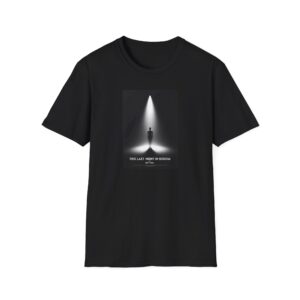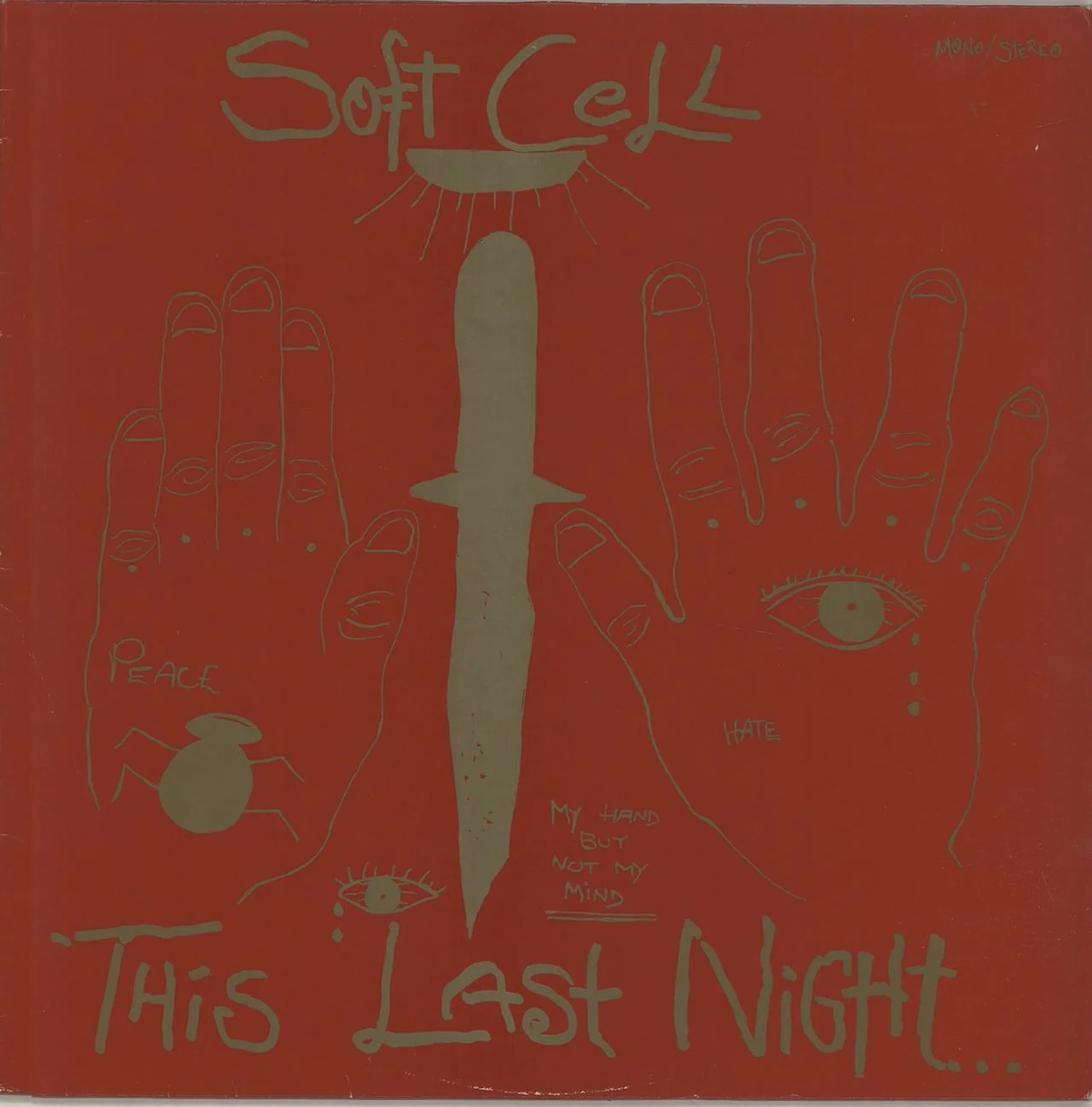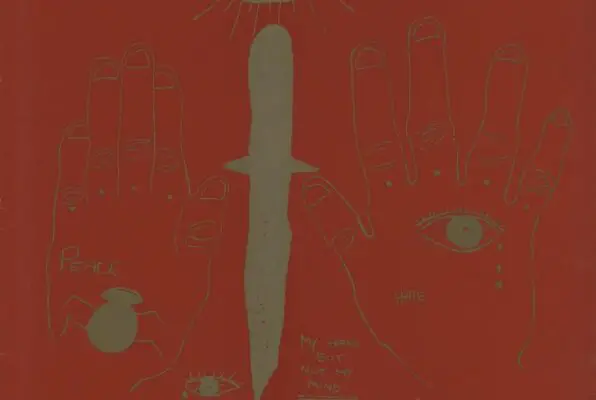Uncover the history, tracklisting, key themes, and more of Soft Cell’s iconic album, “This Last Night in Sodom,” in this in-depth exploration of the band’s groundbreaking work.
In the annals of music history, few albums have managed to capture the essence of a tumultuous era quite like Soft Cell’s “This Last Night in Sodom.” Released in 1984, this provocative album marked a significant departure from the synth-pop sound that had made the British duo famous. Instead, it delved into darker, more experimental territory, exploring themes of decadence, desire, and despair. Join us as we take a deep dive into the history, development, track listing, significant reviews, key themes, and version/release history of this groundbreaking album.
History and Development
Soft Cell, consisting of vocalist Marc Almond and instrumentalist David Ball, had already achieved international success with their debut album, “Non-Stop Erotic Cabaret,” which spawned the iconic hit “Tainted Love.” However, by the time they began working on “This Last Night in Sodom,” the duo was eager to evolve their sound and distance themselves from the confines of their synth-pop origins.
The album’s title itself, “This Last Night in Sodom,” hinted at a more hedonistic and decadent direction. Drawing inspiration from the seedy underbelly of nightlife in the 1980s, Soft Cell set out to create a record that would challenge conventions and expectations. They enlisted the help of producer Mike Thorne, who had worked with them on their previous albums, to bring their vision to life.
The recording process for “This Last Night in Sodom” was not without its challenges. The album was recorded in various studios, including Konk Studios in London and Electric Lady Studios in New York City. Soft Cell experimented with a wide range of instruments and soundscapes, pushing the boundaries of what was considered mainstream pop music at the time. This experimentation would ultimately define the album’s unique sound.
Track Listing
“This Last Night in Sodom” features a total of ten tracks, each contributing to the album’s overall narrative and atmosphere. Let’s take a closer look at each of these songs:
- “Mr. Self Destruct” – The album kicks off with this brooding and intense track, setting the tone for what’s to come. Marc Almond’s haunting vocals and David Ball’s evocative synth work create an eerie and hypnotic atmosphere.
- “Slave to This” – This song delves into themes of addiction and obsession, with Almond’s vocals conveying a sense of desperation and longing. The pulsating rhythm and electronic textures add to the song’s intensity.
- “Little Rough Rhinestone” – Soft Cell takes a more experimental turn with this track, incorporating unconventional sounds and textures. It’s a sonic journey that pushes the boundaries of traditional pop music.
- “Meet Murder My Angel” – This song explores themes of violence and desire, with Almond’s vocals alternating between seductive and menacing. The combination of dark lyrics and electronic instrumentation creates a sense of unease.
- “The Best Way to Kill” – A highlight of the album, this track features Almond’s emotionally charged vocals and Ball’s intricate synth melodies. The lyrics depict a tumultuous relationship, adding depth to the album’s narrative.
- “L’Esqualita” – Soft Cell pays homage to the famous New York City nightclub “La Escuelita” with this song. It’s a frenetic and energetic track that captures the spirit of the club scene in the 1980s.
- “Down in the Subway” – This song takes the listener on a journey through the gritty subway tunnels of a dystopian city. It’s a dark and atmospheric piece that showcases Soft Cell’s storytelling prowess.
- “Surrender to a Stranger” – Another exploration of desire and intimacy, this track features Almond’s seductive vocals and Ball’s hypnotic synth lines. It’s a sensual and mysterious song that adds to the album’s intrigue.
- “Soul Inside” – Perhaps the most accessible track on the album, “Soul Inside” features a catchy melody and a more upbeat tempo. It serves as a brief respite from the album’s darker moments.
- “Where Was Your Heart (When You Needed It Most)” – The album closes with a sense of melancholy and reflection. Almond’s emotive vocals shine on this track, bringing the journey of “This Last Night in Sodom” to a poignant conclusion.
Significant Reviews
Upon its release, “This Last Night in Sodom” received mixed reviews from both critics and fans. Some praised Soft Cell for their willingness to experiment and push the boundaries of pop music, while others found the album’s dark and challenging themes to be off-putting.
One of the album’s most vocal champions was NME (New Musical Express), which described it as “a bleak and unrelenting masterpiece of modern pop.” The publication lauded Soft Cell’s willingness to confront uncomfortable subjects and their commitment to sonic experimentation.
However, not all reviews were as positive. Rolling Stone, for instance, found the album to be a departure from Soft Cell’s earlier, more accessible work and questioned whether the band’s experimentation had gone too far. Despite the mixed reviews, “This Last Night in Sodom” continued to find an audience among those who appreciated its boldness and willingness to challenge conventions.
Key Themes
“This Last Night in Sodom” is a concept album of sorts, weaving together a tapestry of dark and provocative themes that reflect the decadence and turmoil of the 1980s. Some of the key themes explored on the album include:
- Decadence: The album delves into the excesses of nightlife and the allure of hedonism. Songs like “Little Rough Rhinestone” and “L’Esqualita” paint a vivid picture of a world where pleasure and danger coexist.
- Desire: Desire, in all its forms, is a recurring theme on the album. Whether it’s the longing depicted in “Slave to This” or the seduction of “Surrender to a Stranger,” Soft Cell explores the complex and sometimes destructive nature of human desire.
- Darkness: “This Last Night in Sodom” embraces a dark and brooding atmosphere throughout. The album’s sonic palette, coupled with its lyrics, creates a sense of foreboding and unease.
- Isolation: Many of the album’s songs touch on themes of alienation and isolation. Whether it’s the solitary journey through the subway in “Down in the Subway” or the emotional distance in “Where Was Your Heart (When You Needed It Most),” Soft Cell captures the sense of being adrift in a disconnected world.
Version/Release History
“This Last Night in Sodom” has undergone several releases and reissues since its original release in 1984. Some notable versions and releases include:
- Original Vinyl Release (1984): The album was first released on vinyl LP, featuring the ten tracks mentioned earlier. It became a cult favorite among fans of alternative and experimental music.
- CD Release (1985): With the advent of the compact disc format, “This Last Night in Sodom” was made available to a new generation of listeners. This release maintained the original track listing.
- Remastered Editions: Over the years, the album has been remastered and reissued multiple times. These editions often include bonus tracks, live recordings, and additional material that provide further insight into the album’s development.
- Digital Streaming Platforms: In the digital age, “This Last Night in Sodom” has found a home on various streaming platforms, allowing fans old and new to explore its dark and provocative sound.
List of Similar Albums
If you find yourself captivated by the unique blend of darkness, experimentation, and provocative themes found in Soft Cell’s “This Last Night in Sodom,” you might also appreciate the following albums:
- Depeche Mode – “Black Celebration” (1986): Like Soft Cell, Depeche Mode delves into darker themes and sonic experimentation on this album. Tracks like “Stripped” and “A Question of Time” are emblematic of their distinctive sound.
- The Sisters of Mercy – “First and Last and Always” (1985): This album combines gothic rock with post-punk sensibilities, creating an atmospheric and moody experience. Songs like “Black Planet” and “Marian” showcase their brooding style.
- Bauhaus – “In the Flat Field” (1980): Bauhaus‘ debut album is a seminal work in the gothic rock genre. It features haunting vocals and an eerie atmosphere that may appeal to fans of “This Last Night in Sodom.”
- New Order – “Power, Corruption & Lies” (1983): New Order, known for their synth-pop roots, took a darker turn on this album. Tracks like “Your Silent Face” and “Ecstasy” offer a blend of electronic experimentation and introspective lyrics.
- Siouxsie and the Banshees – “Juju” (1981): Siouxsie Sioux’s distinctive vocals and the band’s post-punk sound make “Juju” a standout album. Songs like “Spellbound” and “Arabian Knights” are filled with dark energy and mystery.
This Last Night in Sodom
In conclusion, Soft Cell’s “This Last Night in Sodom” stands as a testament to the band’s willingness to explore new sonic territories and confront challenging themes. Its dark and provocative nature continues to intrigue and inspire listeners, making it a landmark album in the world of alternative and experimental music. Whether you’re drawn to its brooding atmosphere, bold lyricism, or innovative soundscapes, “This Last Night in Sodom” remains a timeless and essential listen for those seeking music that challenges the norm.
-
 Soft Cell, This last Night in Sodom T-Shirt$16.13 – $24.40
Soft Cell, This last Night in Sodom T-Shirt$16.13 – $24.40

